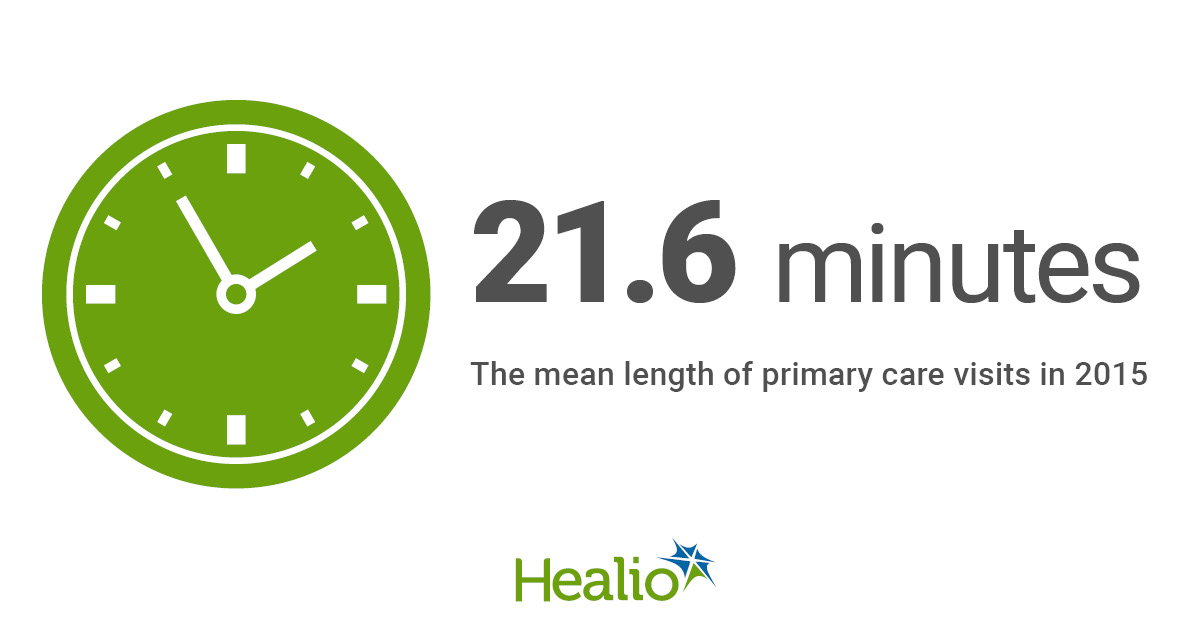Duration of primary care office visits increases
The time spent during primary care office visits in the United States increased from 19.3 minutes to 21.6 minutes during a recent 7-year period, according to an analysis of more than 3 billion office visits published in Annals of Family Medicine.
“Recent evidence shows a national decline in primary care visit rates over the last decade,” Aarti Rao, BA, of the Icahn School of Medicine at Mount Sinai, and colleagues wrote. "It is unclear how changes in practice — including the use and content of primary care visits —may have contributed."
Researchers examined census reports to calculate visits per capita, and they used data from the National Ambulatory Medical Care Survey to analyze details of adult visits to primary care physicians.
They found that from 2008 to 2015, primary care visits increased by 2.4 minutes. In addition, PCPs addressed 0.3 more diagnoses, discussed 0.82 more medications and provided 0.24 more preventive services per visit. Use of electronic health records increased 44.3%, and use of secure messaging rose 60.9%.

Conversely, the number of primary care visits per capita dropped 20%, and the number of scheduled PCP follow-up visits declined 6%, researchers said.
Rao and colleagues wrote that PCPs providing more comprehensive care at each visit and their greater use of e-mail and secure messaging may explain the decline in visits per capita.
“Our findings suggest the need to recognize and remunerate PCPs adequately for increasingly complex work, and mitigate the potential for PCP burnout, through strategies such as adequate reimbursement for nonvisit-based care and further support of these delivery models,” they added. – by Janel Miller
Disclosures: Rao reports no relevant financial disclosures. Please see the study for all other authors’ relevant financial disclosures.
